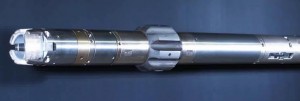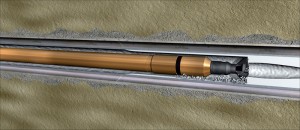‘Intelligent intervention’ matures into key piece of well automation puzzle
By Katie Mazerov, contributing editor

Many oil and gas wells are “smarter,” with more automated monitor and control capabilities than ever, but regardless of how much state-of-the-art technology is placed downhole, even the most intelligent well eventually will need an intervention as a result of equipment failure, scale or sand build-up or integrity problems with tubulars. That’s where robotics comes into the picture.
A relatively new class of services, robotic solutions incorporate downhole mechanical, hydraulic and electric technologies to fix problems and restore production in automated wellbore completions, explained Brian Schwanitz, vice president of Welltec. Welltec is presenting a session, “Improved Downhole Robotic Technologies for the Oil and Gas Industry,” at the SPE well construction automation workshop on 16-18 July in Vail, Colo.
The tools are designed to provide remediation in wells that are scaled up or filled with sand from the formation or for mechanical problems with the casing or “jewelry,” such as valves or gauges that are permanently in the well. “Over the life of the well, these devices become disabled and won’t work anymore,” said Mr Schwanitz, who is also chairman of the Intervention and Coiled Tubing Association. “For example, if a downhole valve in an intelligent well stops opening or closing on command from the surface, a robotic tool can go in, latch into a shifting sleeve and perform a sequence that mechanically opens or closes that valve or even puts it into the correct partially opened (choked) position.
“Smart-well hardware is sophisticated, but complex, and with complexity comes a higher risk of failure,” he continued. “As these wells become more complicated, there needs to be more intelligence applied in the way problems are remediated. This is where new automation such as robotics is providing ‘intelligent interventions,’ with remote monitor and control, to catch up with what the industry is putting in the ground.”

Faster, cost-effective
Robotics offers “lighter touch” methods to adjust the flow by cleaning or cycling disabled valves, and monitoring the well. Most recently, diagnostic sensors have been deployed with the robotics to determine production or injection problems, and have expanded to include fiber optics and micro-seismic sensing. The technology provides a faster, more cost-effective alternative to restore production, especially in horizontal wells or offshore subsea wells, the two most challenging well intervention categories, he noted. Conventional remediation methods, such as coiled or threaded tubing and drill pipe, intervene in a blind mode and are expensive and time-consuming because they involve bringing in large amounts of equipment and people, which increases risk.
The relatively small tools are run into the hole on an electric wireline and can be controlled from the surface, as far as four to five miles away. Often, they are programmed in advance to do certain tasks. In long horizontal wells, the tools are run in on a tractor to clean out debris, remove scale deposits and bring debris back to surface without circulating fluids from the surface or using pumping equipment or a rig. For subsea wells, robotics tools can clean leaking safety valves or remove and replace a problem gas-lift valve from a small intervention boat, versus mobilizing a large semisubmersible rig at a cost of millions of dollars.
Since Welltec introduced downhole robotics to the market 16 years ago, the technology has finally achieved widespread industry acceptance and is now used in every operating province, Mr Schwanitz said. “Operators and service companies are now realizing that if they are going to design an intelligent completion in a well, they need to design it for intelligent interventions as well.”
In best cases, completions are being designed with failure contingencies from the beginning, instead of after something goes awry. “Robotics is one piece of the automation puzzle that is continuing to evolve,” he said. “As an industry, we need to keep these wells flowing for many years, and therefore, they have to be made intervention-friendly.”




